Crepe Myrtle Diseases & Tree Problems You Should Keep A Check On
Understand why is there no bloom, no fresh growth or an unhealthy foliage
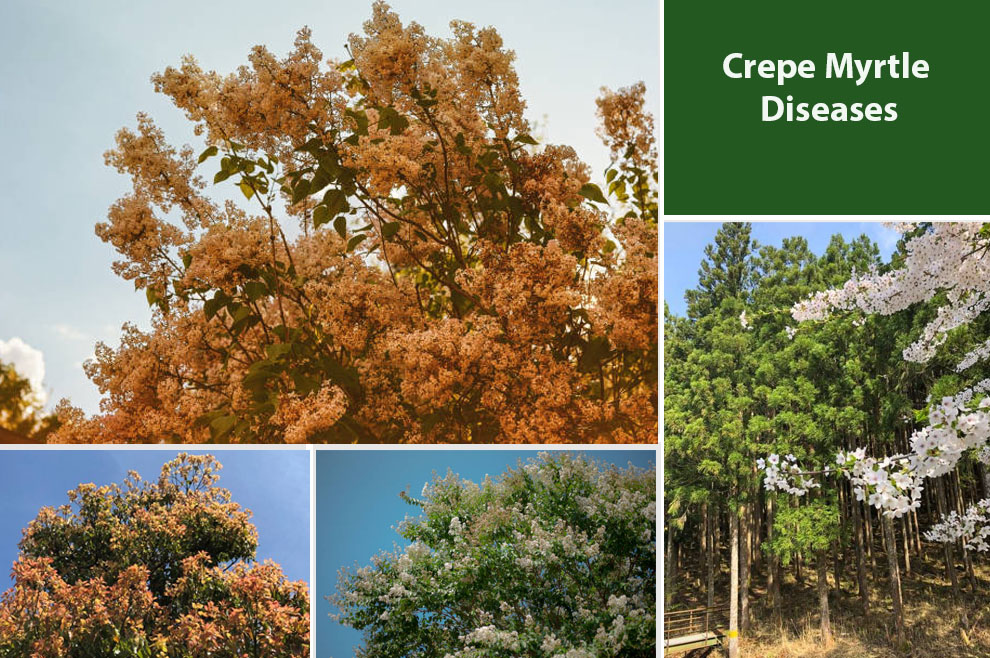
Crepe Myrtle is a local favorite in the South for multiple reasons. They demand almost negligible maintenance post-installation and bring an array of spectacular colors to the landscape that only a few can match. Though they are one of the most low-maintenance flowering plants, time and again, they can become a breeding ground for diseases, resulting in many problems. So, what is so bad about crepe myrtles?
In all honesty, crepe myrtle does encounter a few issues, but you can overcome them with little assistance from a certified arborist or often on your own. You can also be proactive and take preventive measures to avoid the problems before they crop. The first step towards preventing the majority of crepe myrtle diseases and pests is carefully picking the crepe myrtle variety.
For instance, if you live in the Upper South, you would want to select a hardy Crepe Myrtle. When planting the flowers, you must ensure that the planted Crepe Myrtle receives ample sunlight. Also, Crepe Myrtle is a fast-growing plant, and a larger plant tends to overwhelm the landscape, and if you conduct ill-advanced pruning, it might murder your crepe myrtle.
What Can Go Wrong With The Crepe Myrtle?
Below, we will address the various crepe myrtle tree diseases and other common issues.
1. Crepe Murder – Effects of Pruning
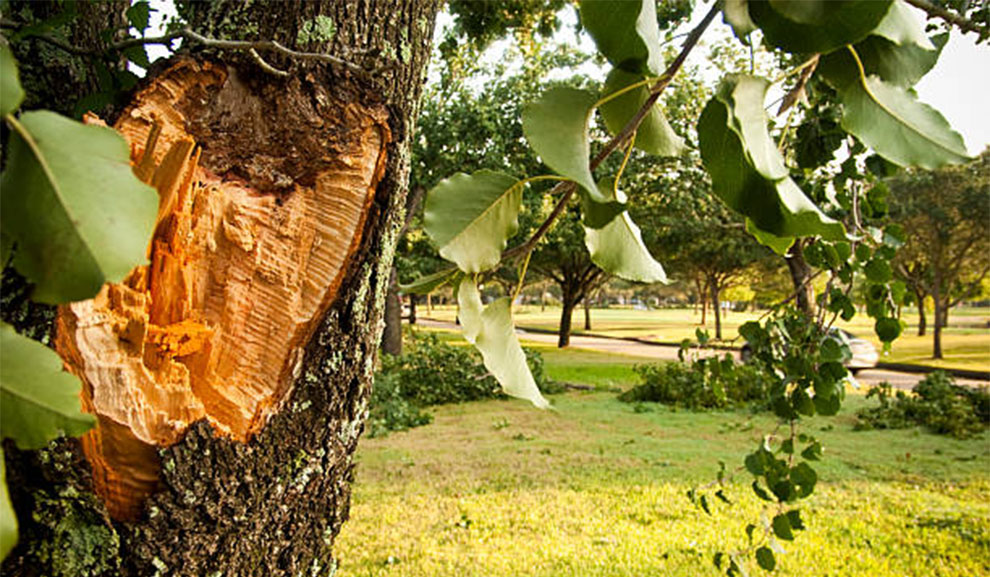
Often we see Crepe Myrtles improperly topped and pruned. It is often referred to as the Crepe Murder, jokingly and otherwise. But, it is more severe than ever. Incorrect pruning can be bad for the wallet and the tree. Usually, people prune the Crepe Myrtles to form a better shape or yield more flowers in the subsequent years. But, it is far from the truth and can result in one of the most prevalent crepe myrtle problems, if not done right.
In reality, topping tends to shorten the bloom times and delay the flowering process, and the tree looks like a bundle of bare sticks stuck on the ground for months. Sadly, after pruning, when it finally starts developing new growth, it will be a bunch of tiny fast-growing stems with poor attachment and an unwanted weeping pattern.
Hence, to avoid such a situation, be careful when pruning. If done right, pruning ensures that the tree lasts for many years.
Though the tree does not have a heavy pruning demand. It is alright to remove branches that are rubbing or crossing one another or ones that are dead/dying, or those weakly attached to the tree. Pruning also helps clear structures like buildings, houses, driveways, and power lines.
Another one of the crepe myrtle problems that can be solved by pruning is that since they grow up fast, it gets challenging to fit them in the available space. So, if that’s the problem, please prune them timely and be aware of the variety’s potential height growth and spread in the yard before making a pick.
2. Adverse Effects of Extreme Cold
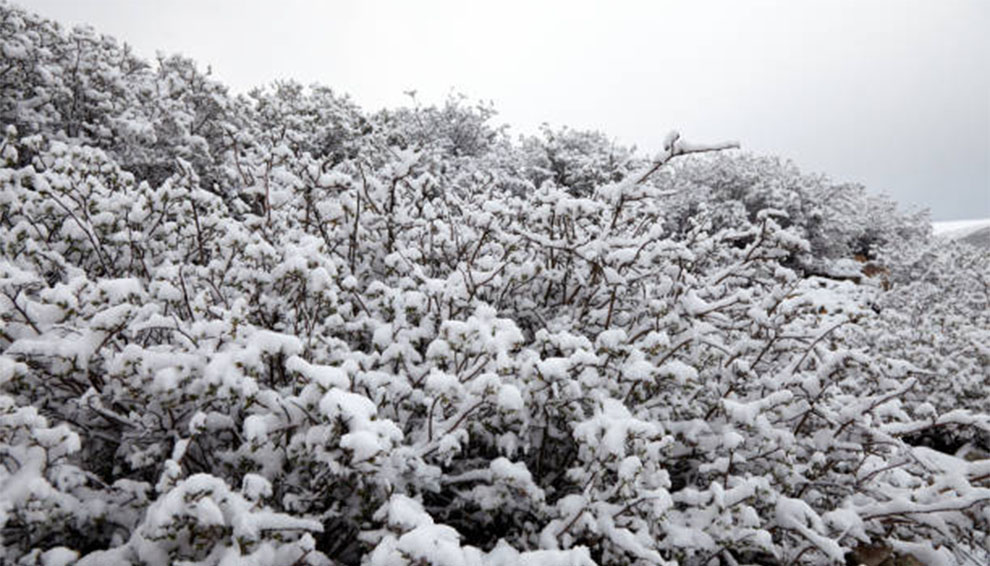
In full bloom, the crepe myrtles can produce more flowers than any other trees in the garden. However, most Crepe Myrtles are suitable for planting in USDA hardiness Zones seven or above. It can survive in temperatures as low as five degrees because of its winter hardiness habit if it is a canopy.
However, sudden winter can induce multiple crepe myrtle tree problems. But still, many grow their Crepe Myrtles in zones six, sometimes even five.
So, is it possible to grow Crepe Myrtles in Zone 5? It can work if you pick the cultivar right and plant the chosen variety in a well-guarded area. So, research well, and then think of planting the Crepe Myrtle in your vicinity. Hence, if a particular cultivar is marked suitable for zone five, it will survive the harsh drops.
However, if you did not perform in-depth research, and the winter becomes the home for crepe myrtle diseases, here is how you can save them:
- Bring the crepe myrtle indoors, but do not treat them like a houseplant. If the cold kills the leaves, move them to a sheltered yet cold spot, lower the watering frequency, and do not feed it any fertilizer. It helps the plant live through winter dormancy. You may see crepe myrtle problems, and your plant may look dead during this time, but do not lose faith. When spring comes, expose the plant back to the outdoors. You can commence watering and fertilizing as you see the new growth springing,
- Grow them as perennials, meaning they will die back to the ground in the winter and then stem again in the spring. Though it can be one of the most inconvenient crepe myrtle tree problems, it can work well with varieties that remain low and bushy.
- Look for the correct microclimate if you wish to grow plants outdoors in colder temperatures.
3. No Bloom

Even though the crepe myrtles are hardy and reliable, they may still not bloom. Several crepe myrtle diseases might cause this problem, but the reasons go beyond that. Here are some reasons why your crepe myrtle might not produce flowers:
1. Your trees are very young: Typically, it takes about three to five years for the tree to establish and bloom. So, if younger trees are not producing flowers, it is ok and is not a giveaway of any crepe myrtle tree diseases.
2. It does not get enough sunlight: The tree needs at least six hours of sun. So, if other trees shadow it or it does not get the required sun, the tree won’t bloom. Again it does not indicate any significant problem. So, moving the plant to a spot where its sunlight requirements are met can do the needful for the plant.
3. It does not get adequate water: In the first year, the crepe myrtles like regular watering. But, after maturity, they become drought-tolerant. However, extended periods of extreme drought can be a big reason behind several crepe myrtle diseases and problems, and not blooming is one of them.
4. You have planted it in poorly draining soil: Soil quality does intervene with its ability to produce flowers.
5. You are not feeding it the required nutrients: For crepe myrtles to bloom, it needs the necessary nutrients. If the soil does not provide it, you need to use the potting mix that can make up for the deficiency. To avoid these crepe myrtle problems and to ensure that the plant produces flowers, you can use a slow-release fertilizer. When selecting the feed, do not pick a fertilizer with a high nitrogen component because that can also inhibit flowering.
6. Incorrect pruning: Crepe myrtles only blossom on the new growth, so be cautious with what you trim to ensure your plant thrives and remains healthy.
7. Crepe myrtle diseases: You see stunted growth in an infected crepe myrtle. We will study them in detail in the following section.
4. Pests and diseases
Though essentially trouble-free, some pests and diseases are unfavorable for the plant. While some are treatable, others may be fatal for the plant. Let us study some common crepe myrtle tree diseases and pests and ways to overcome the damage caused by them.
1. Powdery mildew on Crepe Myrtle: If your crepe myrtle is susceptible to powdery mildew, it may get attacked in the rainy season. Further, poor air circulation and insufficient sunlight aggravate its risk. Nitrogen-dominant fertilizers might also trigger the problem.
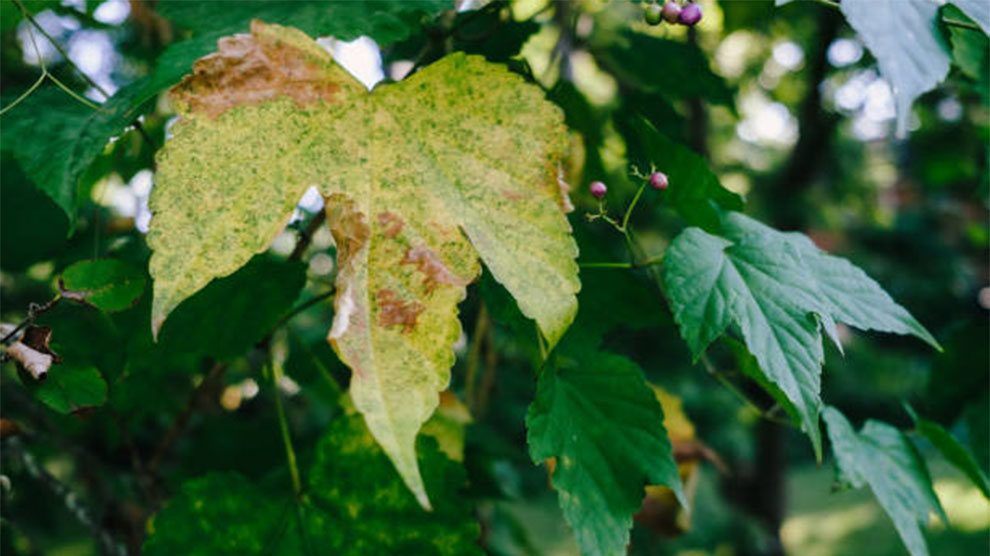
It is a white fungus that grows on the flower beds and the leaves, making the leaves brown or yellow. It is one of the most prevalent crepe myrtle diseases that results in distorted, curled, or stunted growth. You will see it as white or grayish spots on the leaves. The fungus might make the flower buds drop without popping, or foods fall to the ground earlier.
To tackle such crepe myrtle problems, you must opt for mildew-resistant varieties. But, if your specie is not resistant, you can spray the foliage with Natria Disease Control, horticultural oil, neem oil, Immunox, or Daconil.
2. Aphids: Theyare one of the most prevalent pests that affect Crepe Myrtles. When the plant gets infected with aphids, it turns greenish-yellow with black spots on the abdomen. These crepe myrtle diseases and pests feed on the plant sap from the tender new leaves. Plant sap is rich in sugar.
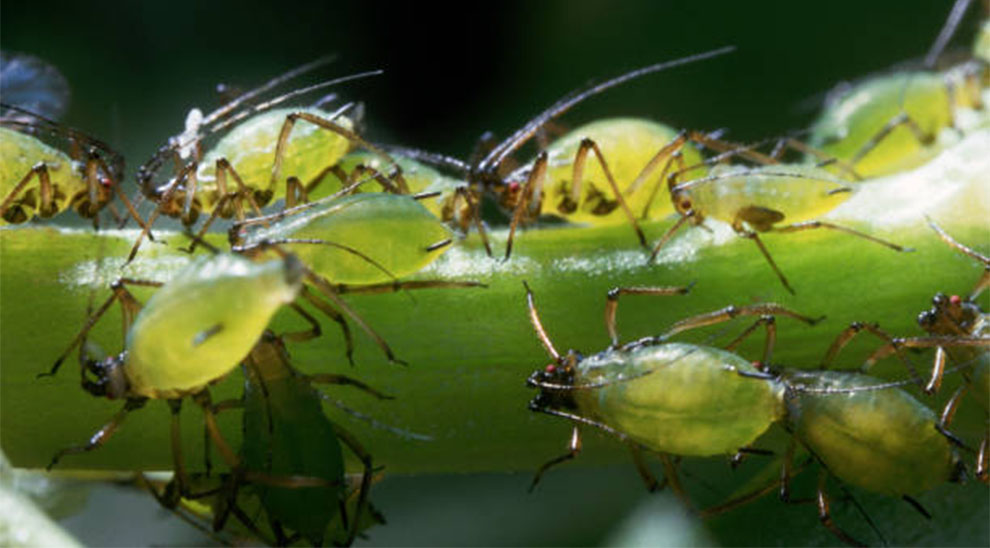
So, when aphids feed on them, they excrete a sugary liquid known as honeydew. So, with a vast aphid population, the honeydew might coat the leaves and serves as food for the sooty mold fungi and other insects, such as flies, wasps, and ants.
It can cause the leaves to develop yellow spots and might also result in leaf distortion. Aphids also affect the flowers, tips, branches, and buds. Some crepe myrtle hybrids are resistant to aphids. So, you can plant them to avoid aphid attacks. In addition, some natural predators feed on aphids. You can include them to reduce the aphid population.
Alternatively, you can eliminate such crepe myrtle diseases and pests by spraying a powerful stream of water. Do it continuously till you get rid of all the aphids. Unfortunately, because of their mass production rate, it is not easy to tackle them solely with insecticides.
So, even if one aphid survives, it can again produce a whole colony in a short span. Moreover, when you use insecticides, they kill the beneficial predators with the pests. So, use them only if necessary and pick on the insecticides meant exclusively for aphids on crepe myrtles.
3. Sooty molds or Black molds: In these crepe myrtle diseases,the stem and leaf surfaces are full of a black sooty substance, making them appear dirty and black. It is an indicator of an insect problem and results from a fungus that grows on honeydew, produced from insects that suck sap from the plant.
Mealybugs, scales, aphids, and whiteflies are the prevalent causes of this concern. Though unappealing, they are mostly harmless and do not attack the plant directly.
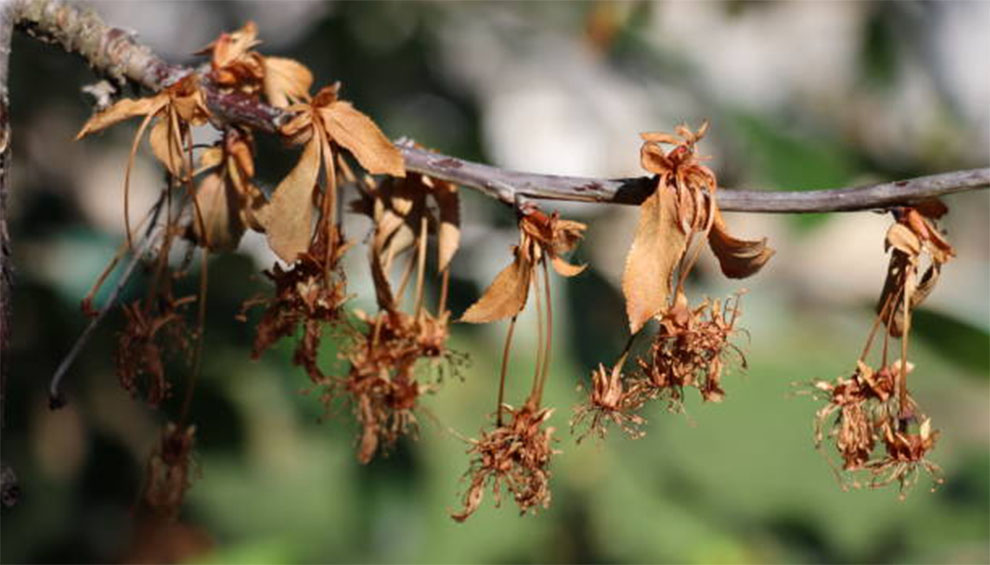
You can tackle this problem by keeping crepe myrtle tree problems in check. So, if it is aphids, you can use the measures above to reduce their population. Further, you can remove sooty mold from the leaves by spraying leaves with dish soap solution, letting the soap stay for at least four to five minutes, and then washing them with clean water.
4. Crepe Myrtle Blight: It is another fungus attack on crepe myrtles that makes the tips of the branches brown in the summer or spring. You can assess it by observing the black spore-bearing bodies on the foliage. You can treat these crepe myrtle diseases with good cultivation practices and care.
For the plant to thrive and bloom, it demands regular irrigation. However, avoid overhead watering. Overhead watering moistens the foliage and triggers the fungus development.
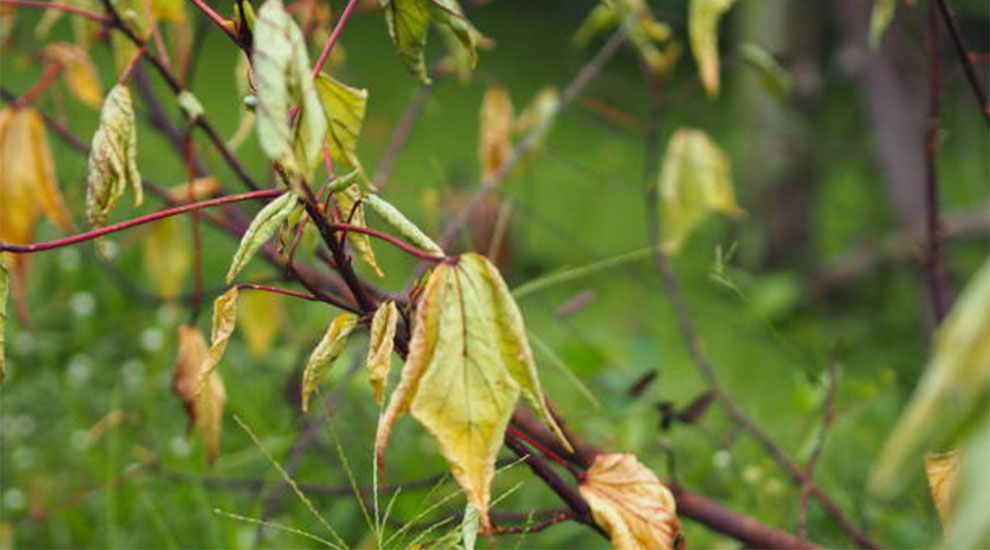
Further, good air circulation can also help prevent crepe myrtle blight development. Prune every crossing branch or the ones that head into the tree’s center to ensure air circulation. In addition, sterilize the pruning tools before and after use. You can do this by dipping them into the bleach to avoid the spread of the fungus.
Removing old mulch and frequently replacing it can also help. Use fungicide only when you are 100% certain that it is a blight attack. You can use the sulfur fungicide or copper fungicide when you start seeing the leaf tip symptoms and repeat every ten days till the signs disappear.
5. Cercospora Leaf Spot: Another of the crepe myrtle tree diseases is the Cercospora Lythracearum-induced leaf spots. Such problems occur in prolonged moist and warm weather periods, wherein you see yellow spots on the upper leaf and white-gray sporulation on the lower leaf surface. It can cause complete defoliation in fall and late summer in vulnerable cultivators.
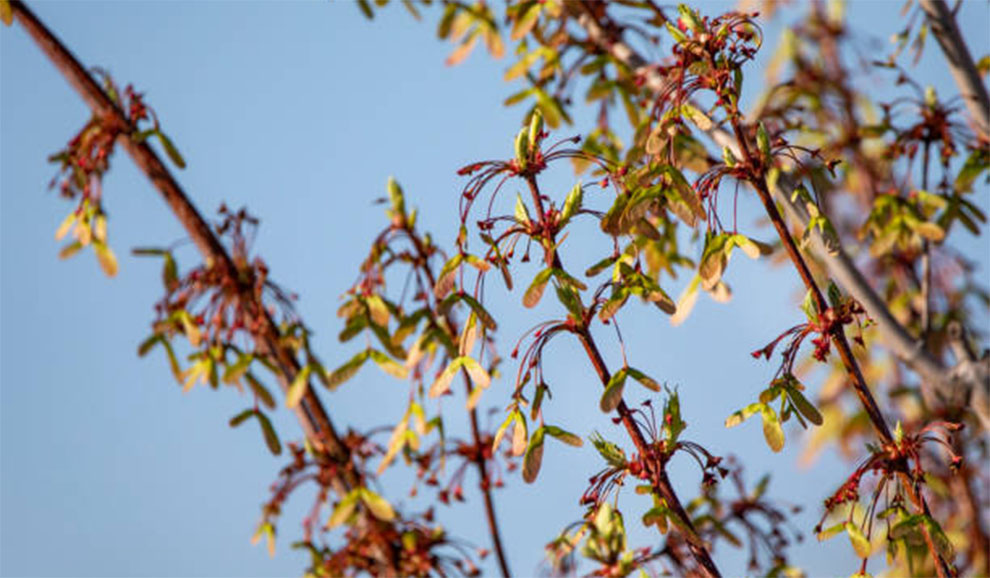
To prevent this, you must pick resistant species, but the degree of resistance depends on the location and available environmental conditions. Further, ensure your plant receives good air circulation and does not compete for space with other plants. However, if the disease seems severe, you can use chemicals for control.
6. Japanese Beetlesare easily identifiable with their metallic bluish or greenish head. Japanese Beetles feed on all the flowers and foliage leading to crepe myrtle tree diseases. Unfortunately, they have a fast spread rate and lay approximately 1000 eggs per period. These primarily affect the younger crepe myrtles.
Hence, if you suspect a beetle attack, you must contact an arborist to eliminate the problem.
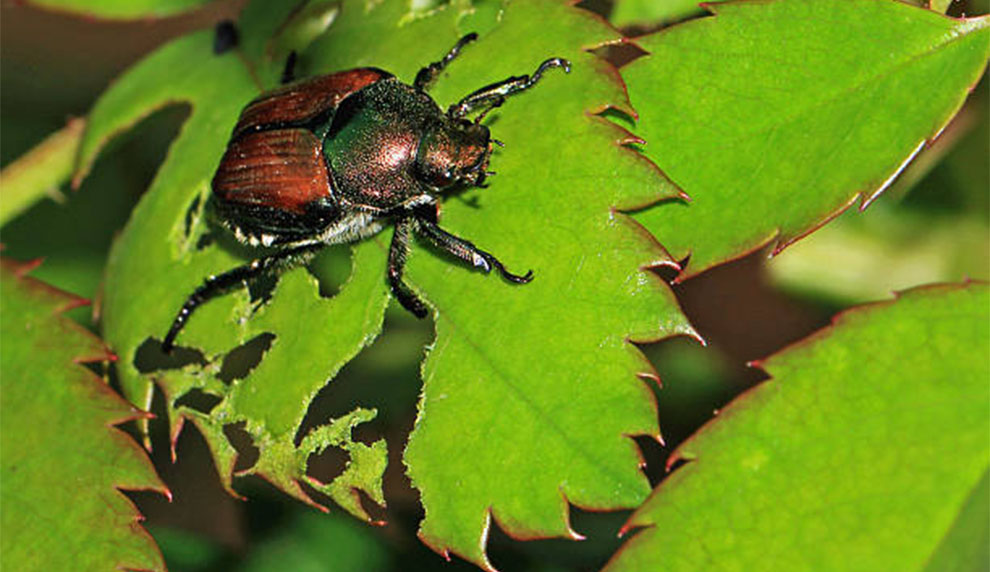
Summing Up…
So, these are some of the prevalent issues with crepe myrtle. Hope you found an answer to what is so bad about crepe myrtles and how take care of it when the situation arises. If self-treatment is not helpful, don’t shy away from taking professional help.
Related Reads: Crepe Myrtle Care Guide | Crepe Myrtle Lifespan
